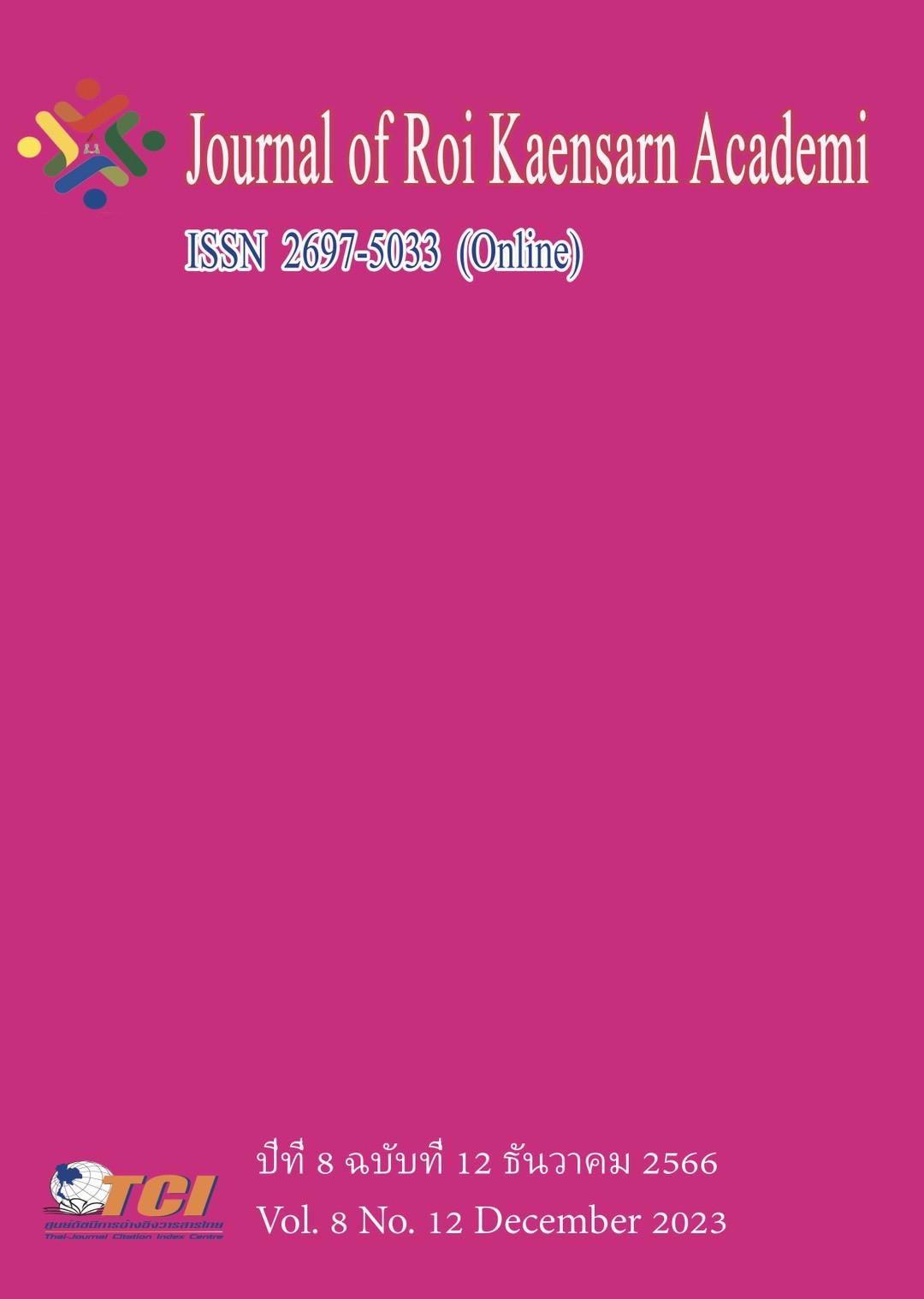Fusion Design for Dong Ethnic Culture Recognition under Workshop Method
Main Article Content
บทคัดย่อ
Facing the intertwining of ethnic culture and fashion trend design in the era of globalization, researchers have observed the collision and fusion of the two within social life. As a result, exploring their potential for coexistence has emerged as a new focus in design research.
The research aim is to explore and analyze the typical cultural symbol characteristics of the Dong ethnic group. By using participatory workshops, the study achieves practical application, followed by comprehensive analysis, and concludes with a set of methods for fusion design. Through field research, the study explores and analyzes cultural symbols and applies participatory workshops for fusion design practice, setting up two workshops for the visual and clothing groups. Through expert interviews, half of the samples are selected, and data are compared and analyzed on how homogeneous fusion and heterogeneous fusion can blend with Dong's cultural elements.
The results demonstrate that participatory workshops can significantly enhance participants' understanding of Dong culture. The application of integrated design successfully guides participants to a more profound experience and understanding of Dong culture, culminating in a new, practicable set of fusion design methods that conserve design resources. This research holds substantial practical significance for preserving and promoting culture and furnishes new perspectives and methods for analogous studies.
Article Details
เอกสารอ้างอิง
Baker, J. (1986). The role of the environment in marketing services: The consumer perspective. The Services Challenge: Integrating for Competitive Advantage, 1, 79-84.
Chen, q. (2016). Study on Eclecticism Design Method in Costume Design Application. (master), Zhejiang Sci-Tech University, Hangzhou.
Daiyun, L. (2017). A bridge cross cultures. Peking: Peking University Press.
Hee, J. K., & Bae, S. J. (2013). A Case Study on the Design Characteristics of Japanese Young Fashion Designers in the Paris Collection. Journal of Fashion Business, 17(6), 158-175. doi:10.12940/jfb.2013.17.6.158
Huo, S., Chu, B., & Zhou, L. (2021). The Application of Mongolian Cultural Symbols in the Design of Dynamic Character Emoticons. Paper presented at the The 6th International Conference on Arts, Design and Contemporary Education (ICADCE 2020).
Ji-Hye, J. (2008). A Study on the Design Characteristics of Chanel Bags - focused on the collections from S/S 2001 to F/W 2008. Journal of Fashion Business, 12(6), 93-106.
Jing, Z. (2020). Analysis of the application of national cultural symbols in visual communication design. Frontiers in Educational Research, 3(1).
liang, x., wu, m., & wei, z. (2020). Art Blooming at Fingertips: Dong Embroidery and Dong Clothing. Literature and History Spring and Autumn Magazine, 42-46.
Ørngreen, R., & Levinsen, K. (2017). Workshops as a Research Methodology. Electronic Journal of E-learning, 15(1), 70-81.
Qihao, Z., Jiaji, L., & Weihang, W. (2022). Inheriting Lingnan architectural genes and witnessing the development of Guangzhou for 70 years:——Written on the occasion of the 70th anniversary of the establishment of Guangzhou Design Institute Group Co., Ltd. (12).
Ren, S., Cheng, D., & Liang, Z. (2008). Analysis of architectural landscape and cultural connotation of Dong villages. Guangxi Urban Construction, 2, 36-39.
Venturi, R. (2002). Complexity and Contradiction in Architecture. United States: Museum of Modern Art.
Walsh, M. F., Page Winterich, K., & Mittal, V. (2011). How re‐designing angular logos to be rounded shapes brand attitude: consumer brand commitment and self‐construal. Journal of Consumer Marketing, 28(6), 438-447. doi:10.1108/07363761111165958
Wang, X., Ye, J. y., & Yang, S. (2017). Study on the Influence Path between Chinese Elements and Consumer Purchase Intention in Global Brand. Journal of Central University of Finance & Economics, 2, 120-128.
weng, x. (2008). local brand strategy. Nanjing: Nanjing University Press.
Yang, h. (2012). Chinese Dong. Ningxia: Ningxia People's Publishing press.

